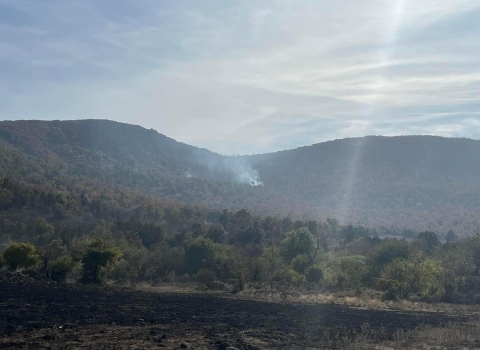DENVER — The U.S. Fish and Wildlife Service is taking two significant steps to support the conservation and recovery of the threatened Canada lynx population in the lower 48 states. The Service is proposing revisions to the current critical habitat designation and releasing the final recovery plan for the species. These actions ensure the long-term survival of this elusive, snow-adapted wildcat that relies on cold boreal forests and abundant snowshoe hares for survival.
The proposed critical habitat designation covers approximately 19,112 square miles across Colorado, Idaho, Montana, New Mexico, Washington and Wyoming. This revision reflects the current science on lynx habitat needs, balancing conservation with land-use priorities. This follows a court-ordered review and updates the 2014 designation in the western United States by reducing areas where lynx are unlikely to thrive while adding new areas more suitable for species sustainability. The existing critical habitat in Maine and Minnesota is not being revised with this proposed rule.
The final recovery plan for the Canada lynx sets clear strategies and measurable goals to support long-term conservation throughout its contiguous U.S. range. The Service collaborated closely with state, Tribal and federal partners to develop science-based conservation measures aimed at reducing risks to Canada lynx. The main threats include the impacts of global climate warming on boreal forest habitats and the species depending on them, including lynx and snowshoe hares.
The Canada lynx is a medium-sized wildcat adapted to cold, snowy environments, where it relies on its large paws to hunt snowshoe hares. Although widespread and abundant in Canada and Alaska, lynx populations in the contiguous U.S. are small and fragmented, and they face pressures from habitat loss and human activity. Canada lynx in the lower 48 were listed as threatened under the Endangered Species Act in 2000.
The proposed rule will publish in the Federal Register on Nov. 29, 2024, initiating a 60-day comment period. The Service will review and consider all comments received by Jan. 28, 2025, before publishing a final rule. Please go to www.regulations.gov, docket no.FWS–R6–ES–2024–0142.
For more information and to access the full recovery plan and proposed critical habitat revision, visit the U.S. Fish and Wildlife Service’s Canada Lynx species profile page on ECOS.
-FWS-
The U.S. Fish and Wildlife Service works with others to conserve, protect, and enhance fish, wildlife, plants, and their habitats for the continuing benefit of the American people. For more information, visit www.fws.gov and connect with us on social media: Facebook, Instagram, X (formerly known as Twitter), LinkedIn, Flickr, and YouTube.



